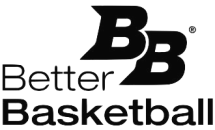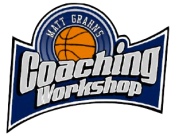Defending Sideline Pick and Rolls
Today I am going to discuss what I think is one of the most effective technique to defend sideline pick & rolls. A sideline (or side) pick & roll is anything set from the free-throw line extended area or below. If you refer back my previous post “Defending Middle Pick & Rolls”, all of those techniques (except “Weak”) are just as effective on the side as well. However, consider throwing this new technique below into the mix.
When defending pick & rolls, most coaches have one goal, prevent the ball handler from turning the corner and getting into the lane. However, too often the ball gets into the lane; resulting in giving up easy points and a coach throwing a tirade on the sideline. Is it really the players’ fault or does it stem from a poor game-plan?
Let me enlighten you on a concept the NBA has been using for years, “Ice” (or “Blue”). If you have ever been fortunate enough to attend an NBA game and sit close enough to hear the players communicating on the floor, you probably heard this term used while defending particular pick & roll situations on the side. There are numerous reasons why some teams prefer to “Ice” and others do not, it all really depends on the coaches’ defensive philosophy. However, my personal reasons why/when you should “Ice” are as follows:
- Guards today are quicker and craftier than ever, force them a certain direction.
- The “Step-Up” screen; bigs in the NBA are some of the best in the world at quickly changing the angle of their screens, “Icing” helps to prevent the defense from being beat on the dribble.
- Against any Shake Pick & Roll. Shake is a common term the NBA uses for side pick & rolls that are set while an offensive player is occupying the ball side corner and a big is lifted. Thus giving you one extra defender to assist the big.
In terms of teaching the technique, “Icing” is somewhat similar to a concept I discussed in my last post, “Weak”. Note: you can use any term/color you would like to call out this defense. As the offense is sprinting into the pick and your big is yelling “Ice, Ice, Ice!”, the guard will adjust his stance to be on the top hip (closest to half-court), forcing the ball toward the baseline. The bigs’ job is to sag off into the wing area and contain the ball until the guard recovers. If the guard gets hung up too long and the ball handler starts attacking the big, make sure your other three defenders are in the right positions ready to help and recover.

Below is a video showing several different “Ice” situations from different teams and their defensive rotations.
The next clip shows Serge Ibaka “Ice” the pick & roll. However, as Nene changes his pick to a “Step-Up”, Danilo Gallinari hits Nene on the roll and the help defense is late on the help.
As you can see from the examples above, having all five defensive players on the same page and in the correct positions are essential in order for “Icing” to be effective.
Posted on May 4, 2011, in Today's Bounce and tagged Defend Pick & Roll, Defending Ball Screens, Defensive Drills. Bookmark the permalink. 9 Comments.






Thanks for sharing! Great information!
Just what I have been looking for to introduce into my team in Australia.
Would like more information on the screen at the top of the keyway,where the guards drives off the screen. What are your thoughts about how to defend this situation.
Coach – I wrote a couple posts on this topic. Many NBA teams will “Weak” middle pick & rolls and always force the ball handler to the left hand. Here are the two posts, let me know if you want to further discuss you can always email me:
I am interested in the counter to Icing the side pick and roll.?
Coach : Offensively the guard being forced to turn down I would give him a few options.
1. Try to attack the lower hip of the big and turn the corner to get to the rim or kick to opposite corner.
2. Attack the defending big and try to split/get back to the middle to score or find open shooters.
I would also teach your big to pop quickly away to create space and be an option as a throwback.
Pingback: Which NBA Backcourt has the Best Future? Part 4 « Three the Hard Way
Pingback: Assessing the Boston Celtics pick-and-roll defense - Sports Latest
Pingback: Assessing the Boston Celtics pick-and-roll defense - I Vote Sports
Pingback: Assessing the Boston Celtics pick-and-roll defense | Sports Discovery